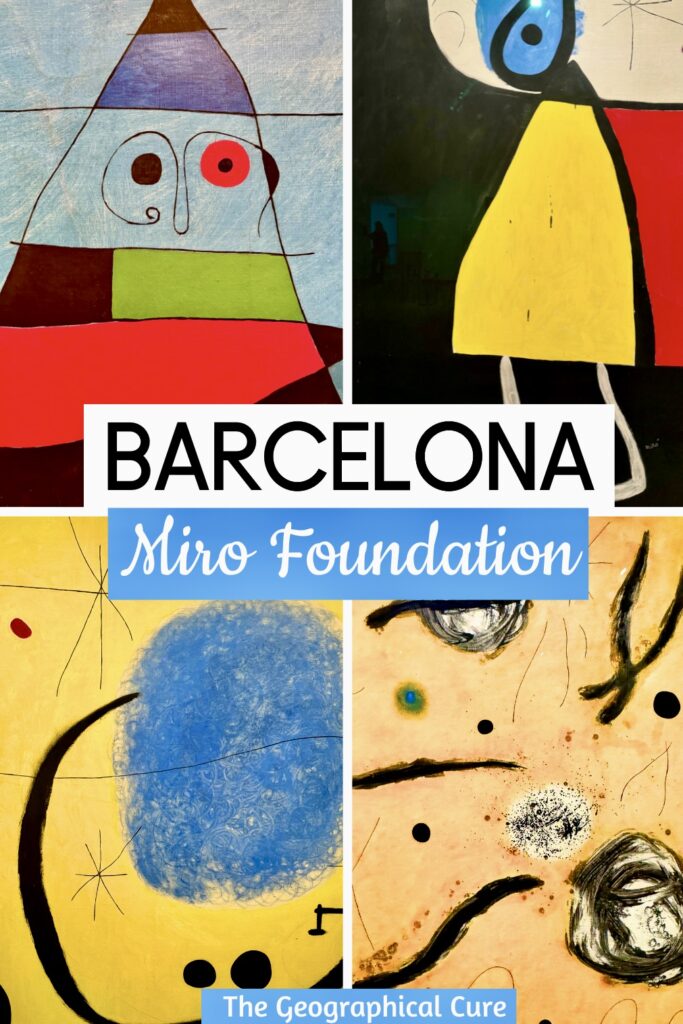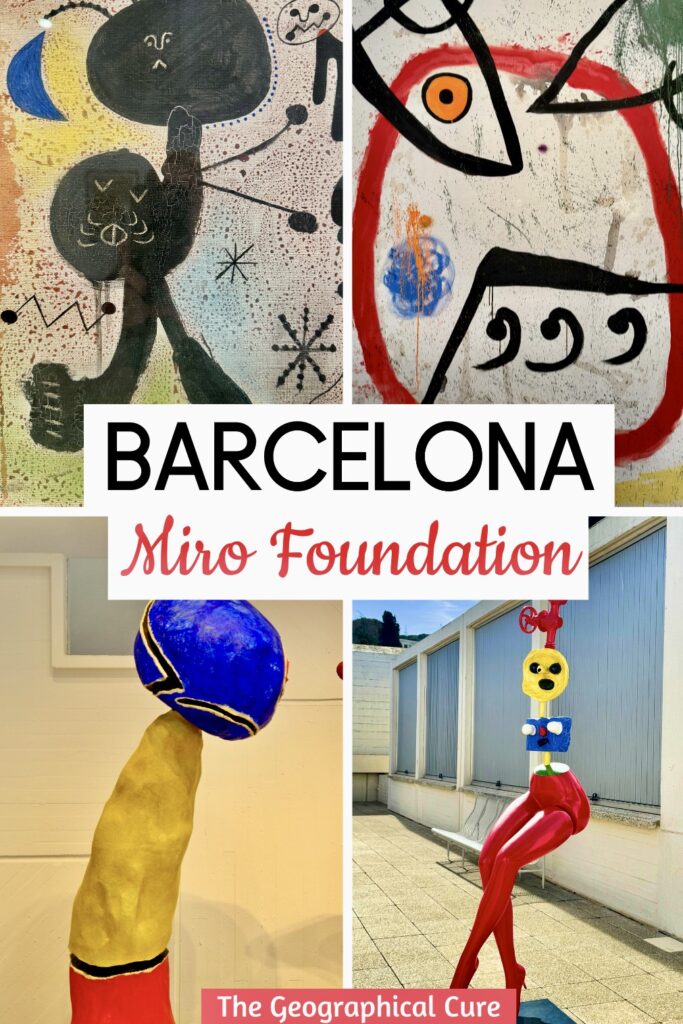Modern art lovers will want to worship at the shrine to the Barcelona-born Joan Miro. He was Catalonia’s most famous Surrealist painter and sculptor.
Miro’s titular museum is housed in a striking white concrete museum on Montjuic Hill. It was built to show off Miro’s art. The architect’s focus was on light, space, and flow.
The museum is a great place to get up close and personal with Miro’s artworks, which show off his bold use of color and experimental shapes.
The museums owns hundreds of paintings, sculptures, drawings, and other works. They are displayed in chronological order.
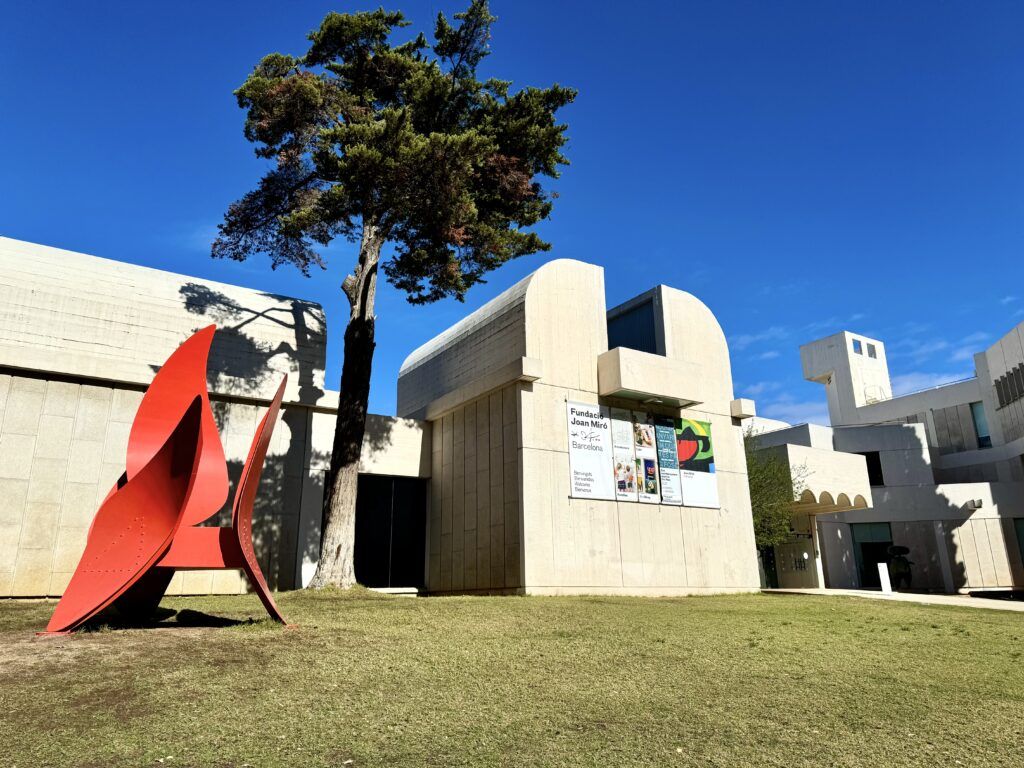
Part of the top floor is an open air walkway filled with sculptures, which is a nice break from the interior collection.
If you like modern art, this fun little museum is a must visit in Barcelona!
Miro’s work is playful, inventive, displays a mastery of color and form, and is a unique blend of figuration and abstraction. It’s fun to fly off into space with him as he meditates on the cosmos.
Quick Tips
- it’s easiest to take public transportation to the museum
- for views, take the Montjuic Funicular, which is just a short walk from the museum
- if you’re visiting in high season, pre-book a skip the line ticket
- the core of the collection is on the second floor, with the first floor mostly given over to temporary exhibitions
- plan to spend 1-2 hours or book a guided tour
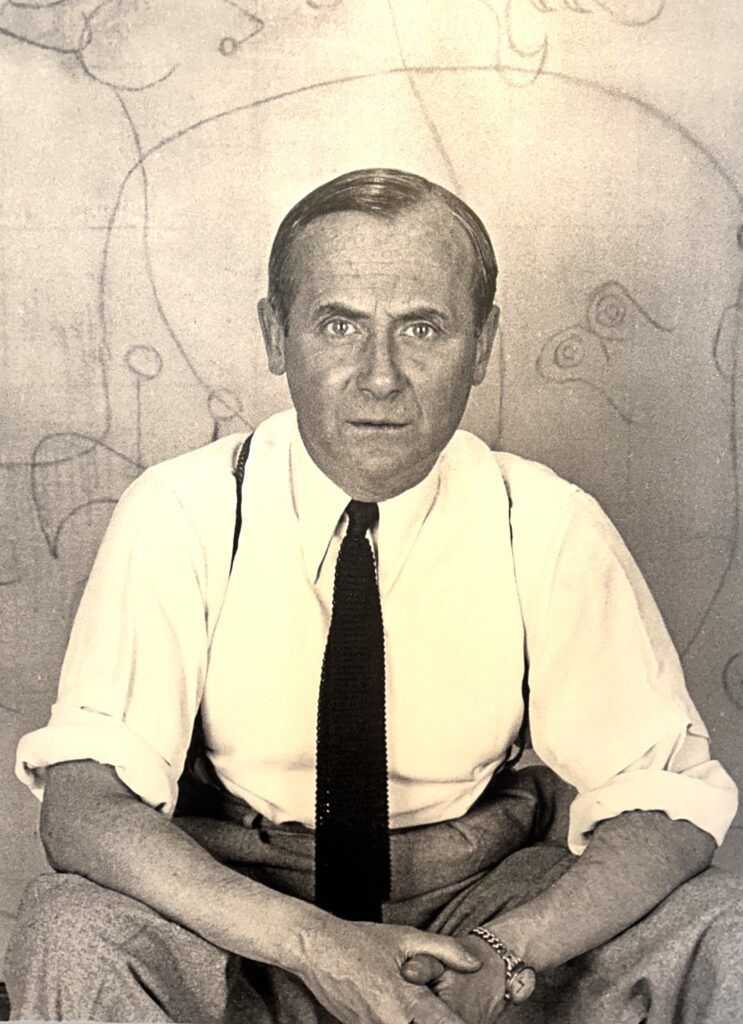
Who is Joan Miro?
Miro was born in the Gothic Quarter of Barcelona in 1893.
Miro was a visionary and pioneering figure of 20th-century modernism.
He’s best known for his abstract and surreal artworks that play with organic shapes, bright colors, and dreamlike imagery.
His works often carry a sense of freedom and spontaneity. They were partly inspired by his interest in the subconscious mind, similar to the Surrealists, though he formally never joined the group.
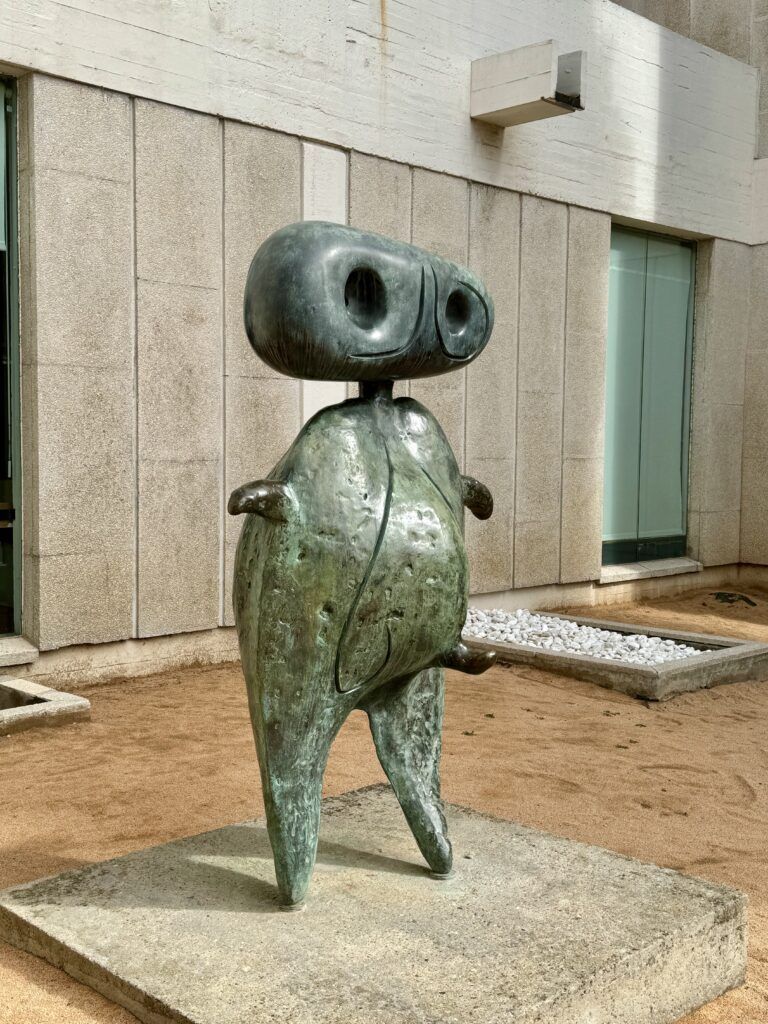
But Miro got off to a rough start. He wasn’t allowed to go to art school, competing a degree in commerce instead.
But business was not for Miro. When he fell ill, he had an epiphany and decided to dedicate his life to art.
Although Miro spent most of his adult life elsewhere, he never forgot his hometown, donating a slew of artworks to the museum.
The pieces show his career progression from distorted female nudes to reductionist poetry on paper to a search for light and harmony. His favorite subjects were women, birds, stars, and the sun.
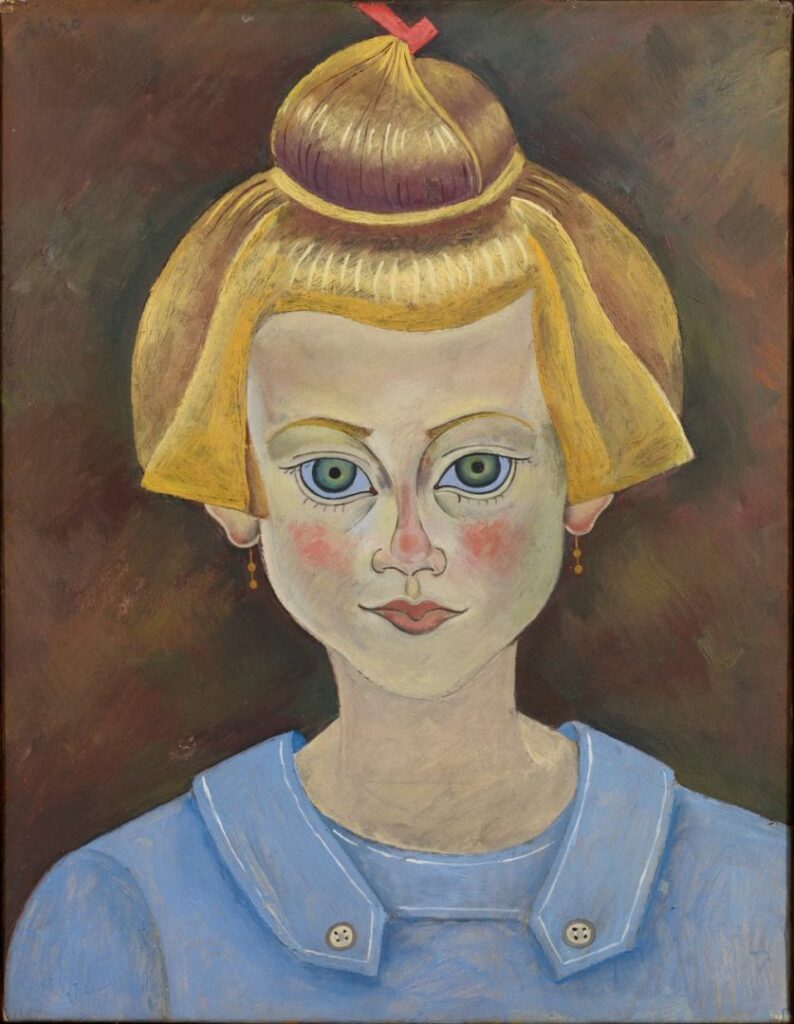
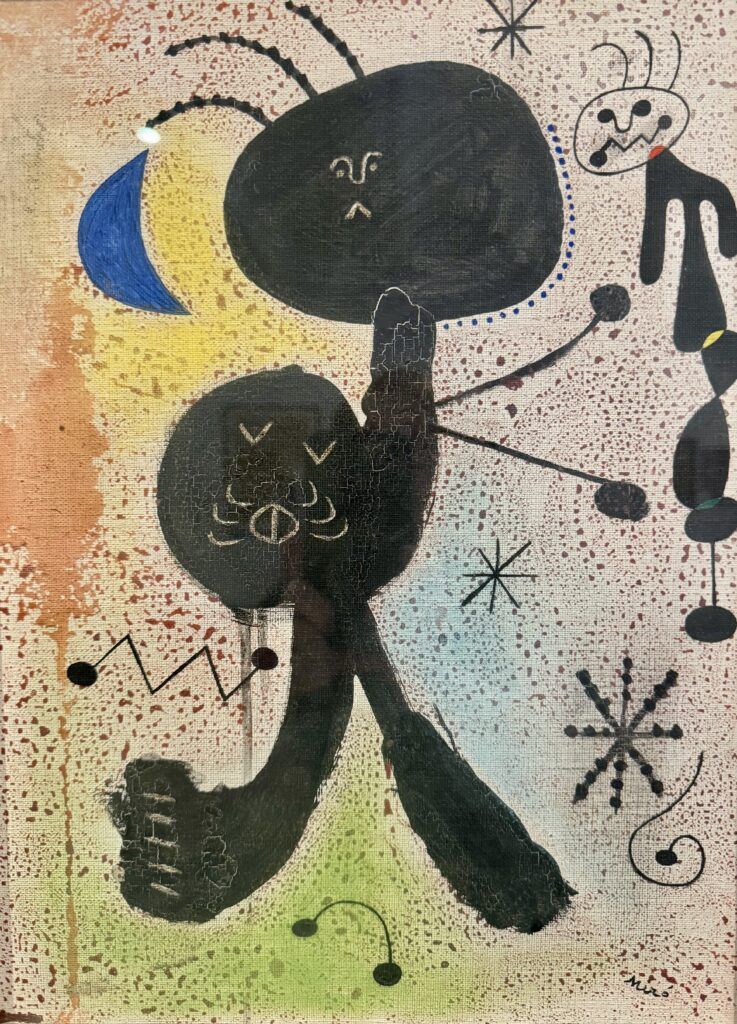
Guide To The Miro Foundation: What To See
Here are some of the museum’s highlights. What’s on display changes, so you may see different things.
Room 1
Room 1, the Sala Joan Prats, shows off a cross-section of Miro’s early work. Early on, he was a sponge of different styles — Fauvism, Cubism, Impressionism, and Dada.
You’ll find a beautiful Portrait of a Young Girl. It’s a rather unsettling painting of a girl with cat-like eyes.
In 1920, Miro begins experimenting, particularly in distorted female nudes.
He meets the Surrealists and dabbles in their art. He likes the idea of circumventing the viewer’s perceptions and inventing viewers to dream.
By 1925, he has left the figurative world completely. He paints some fairly incomprehensible things and cheekily titles them “paintings.”
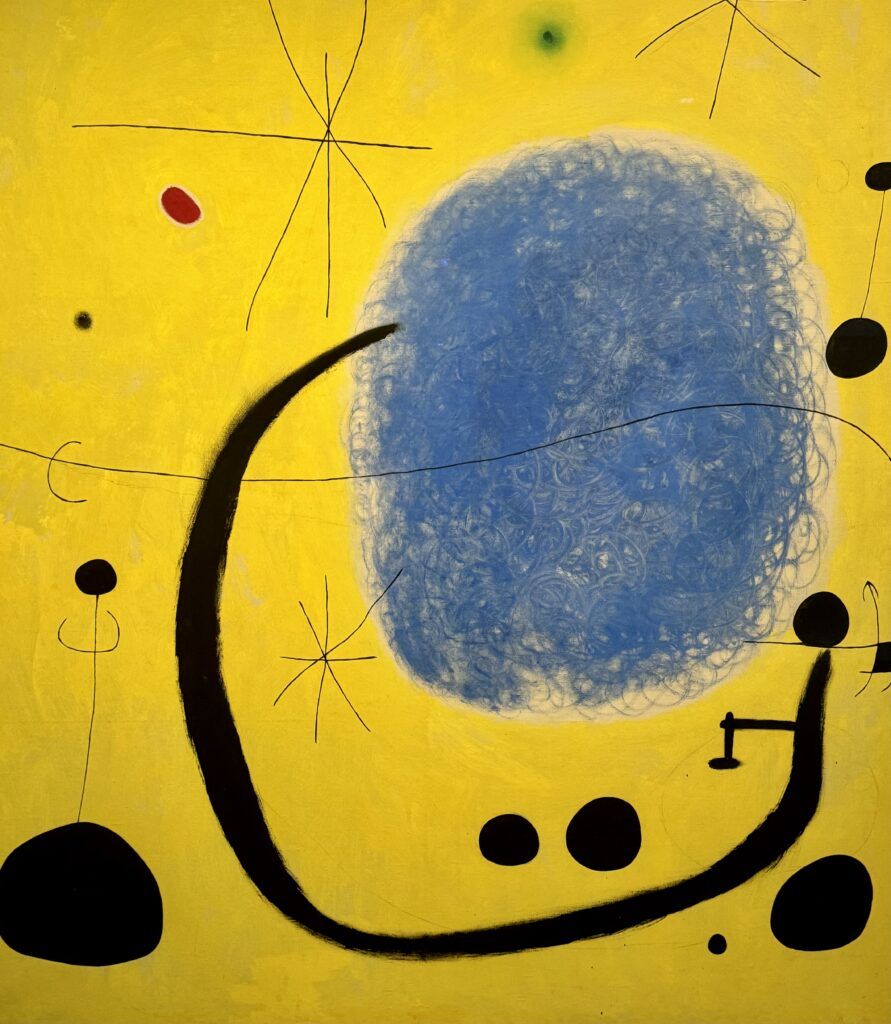
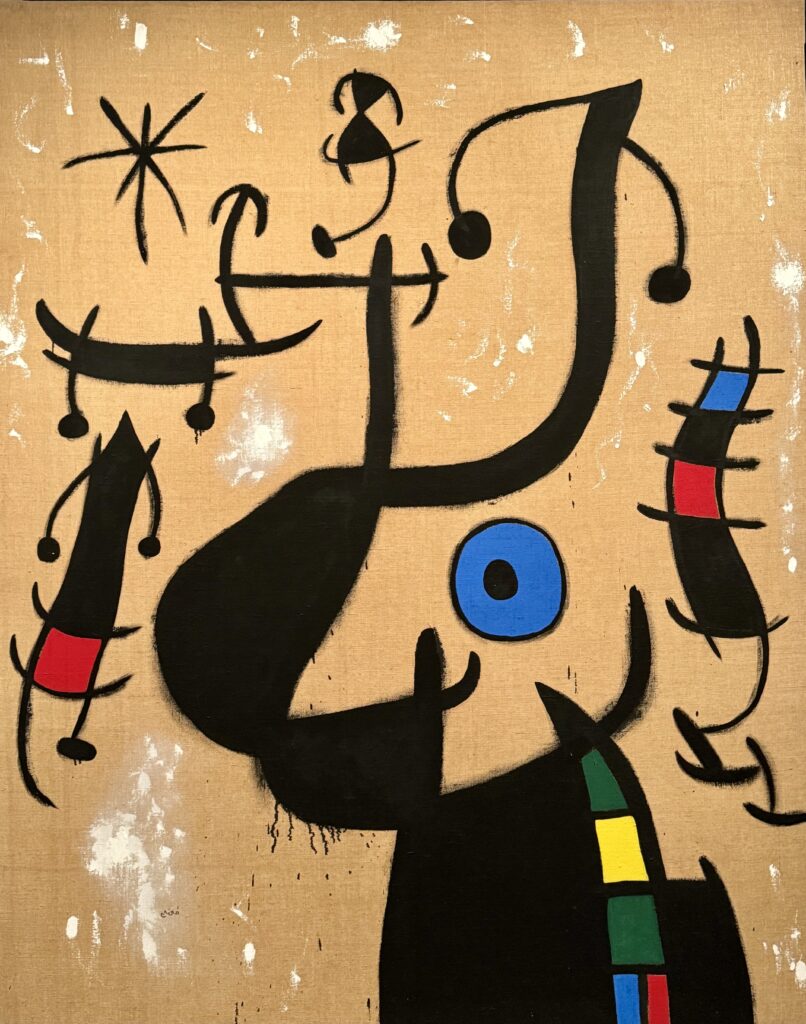
Room 2-10
In the 1930s, the woman became a central theme for Miro. In his bright Flame in Space and Nude Woman, he moves closer to his mature style.
In the 1940s, he flees the Nazi takeover of France and retreats to Spain. After the war, he begins a search for light and harmony.
He becomes fascinated with the cosmos and produces his Constellations series. You’ll see naturalistic objects such as stars, moons, and suns cast against bright backgrounds in a surreal fashion.
One of the most beautiful pieces is enigmatic The Gold of Azure. A large sweeping line lunges into a blue shape surrounded by pinpoint stars.
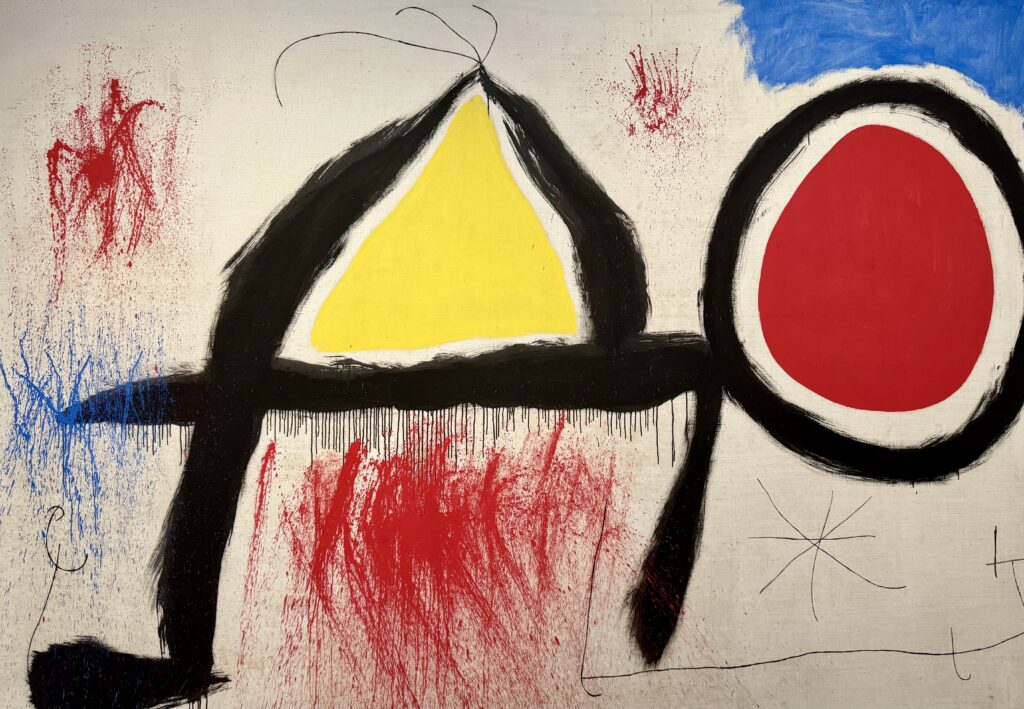
Another massive painting is Figure in Front of the Sun, which he painted when he was living in Mallorca. It may be a Mediterranean landscape.
The lines are simple and forthright. But there are also quickly executed splatters, bringing to mind the techniques of the American Abstract Expressionists.
The canvas also has an Eastern sensibility reflecting Miro’s interest in Buddhist philosophy after a visit to Japan.
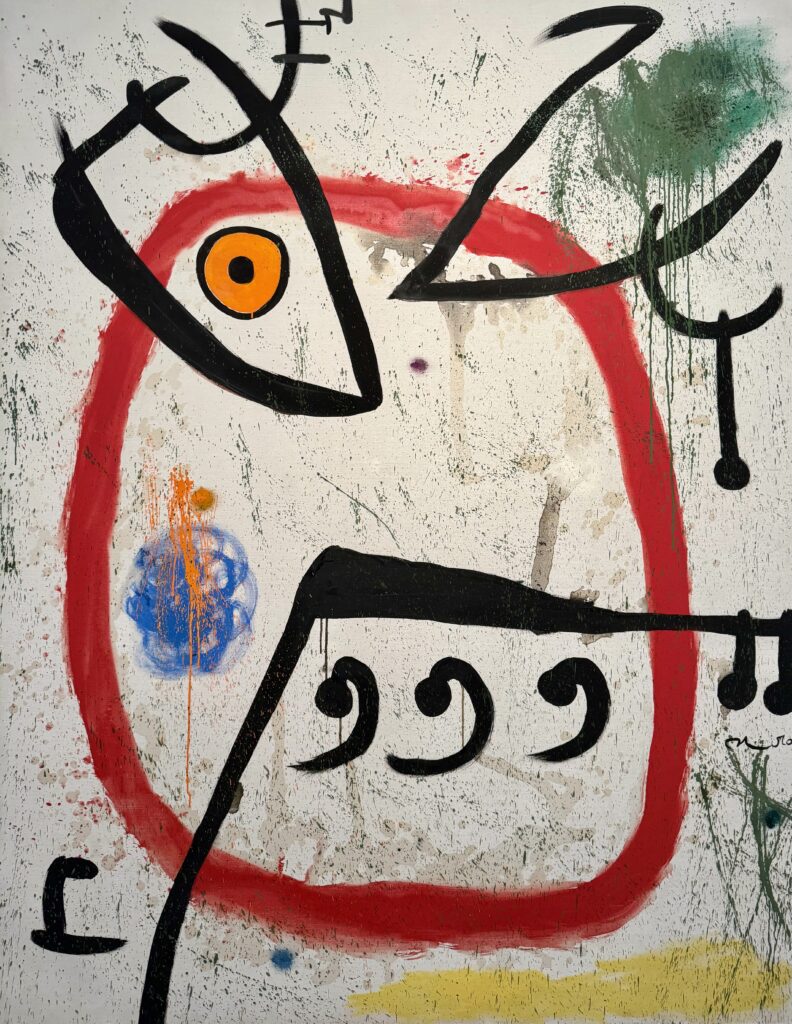
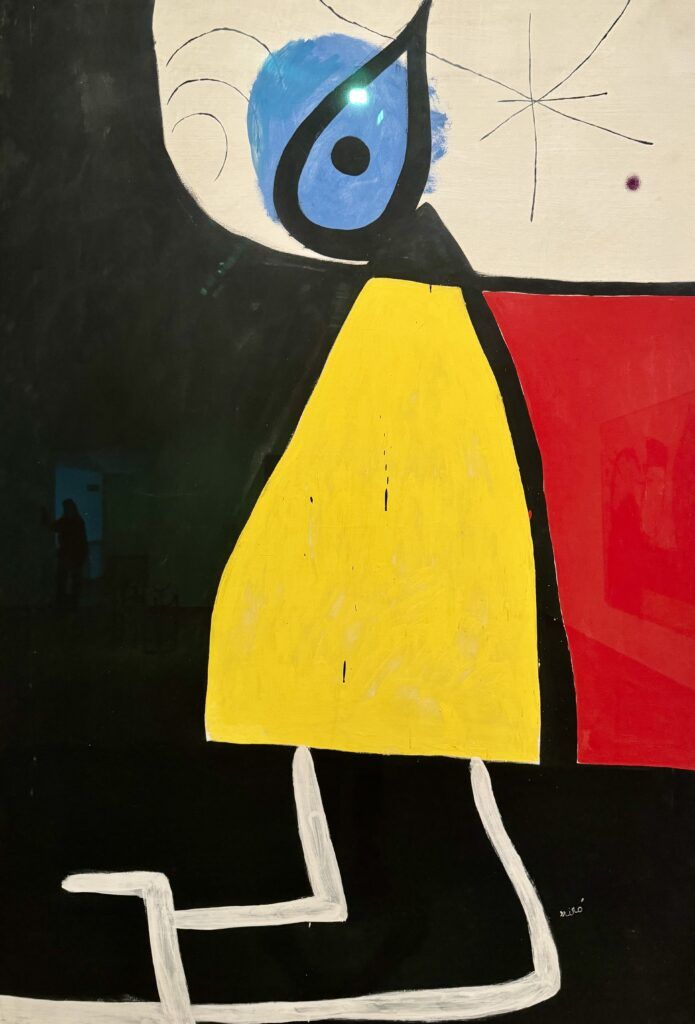
Throughout the 1960s and 70s, Miro continues to refine and simplify his signature style.
There are many paintings of women, which represent his beloved wife Pilar Juncosa. He also produces paintings on a much grander scale.
The portrayal of a woman in a nocturnal landscape is a recurring image in Miro’s oeuvre. He viewed women as an archetype of the universe.
In the beginning, he depicted women through the prism of a wild sexuality, with red splotches standing in for private parts. Later, the woman is a symbol of procreation associated with Mediterranean mythology.
Toward the end of his career, Miro also began producing long mural-like paintings, which would influence the Abstract Expressionists.
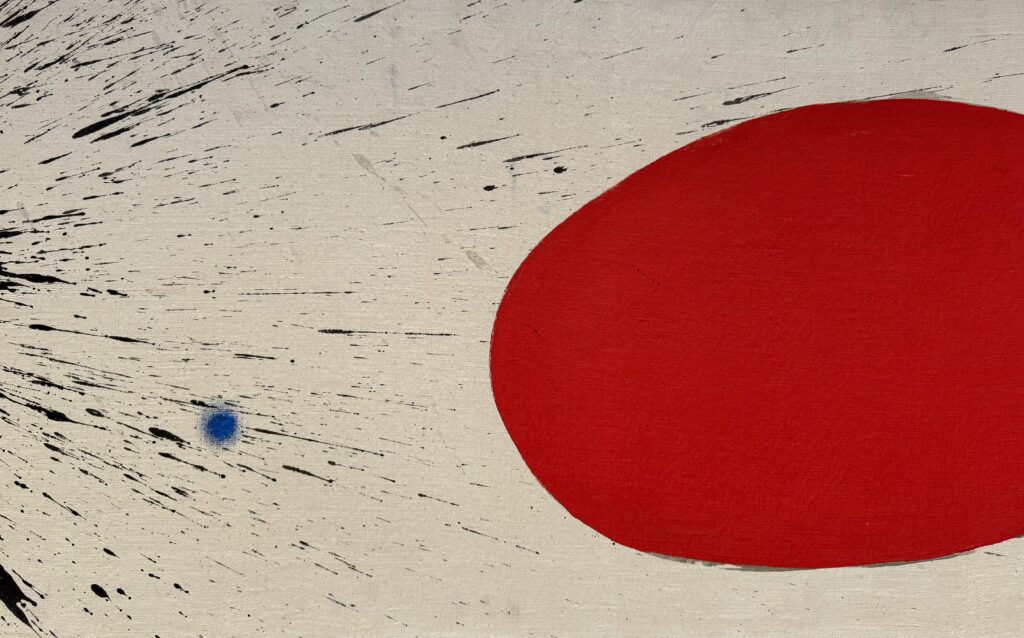
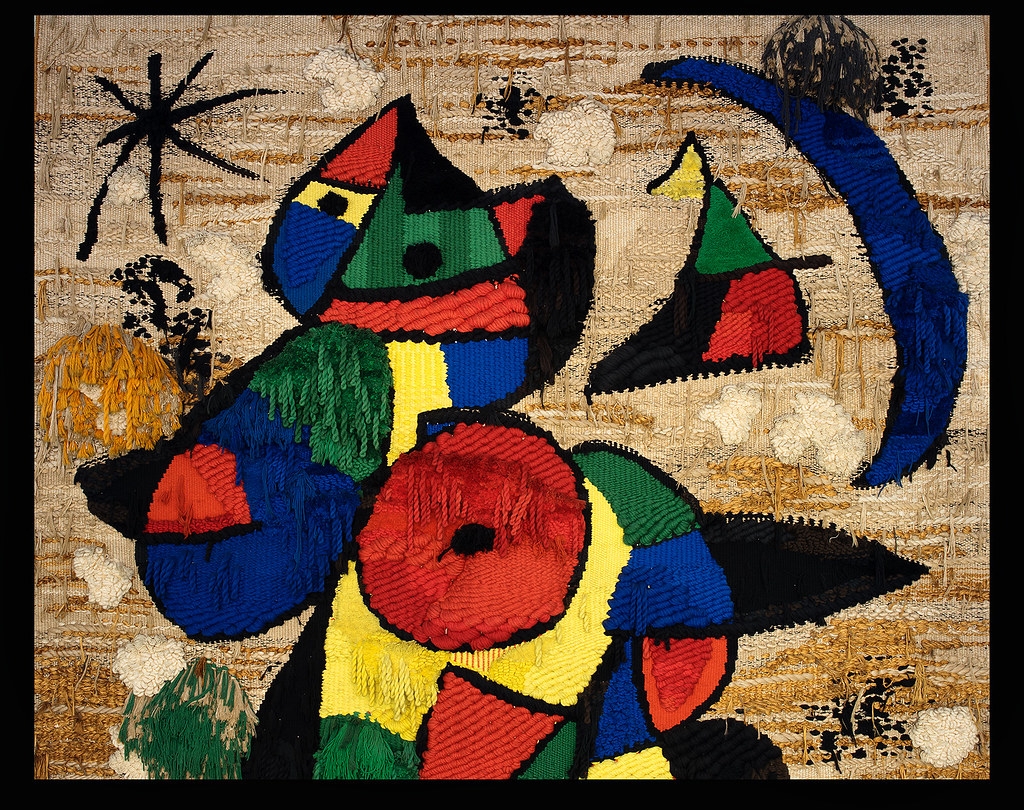
Room 11
In this room, you’ll find a massive tapestry, which Miro designed for the space in 1979. It almost looks like a painting with thick brushstrokes.
Miro’s trademark star and moon are at the top. At 24 by 16 feet, it’s massive.
In the hallway to the next room, you can look through the window to see Alexander Calder’s Mercury Fountain. Like Picasso’s Guernica, it was created for the Spanish Pavilion of the 1937 World Fair.
The sculpture is named after the liquid metal mercury, which flows and moves throughout the structure.
The fountain consists of a series of iron shapes and curves, over which the mercury drips and drops, creating reflections and shapes.
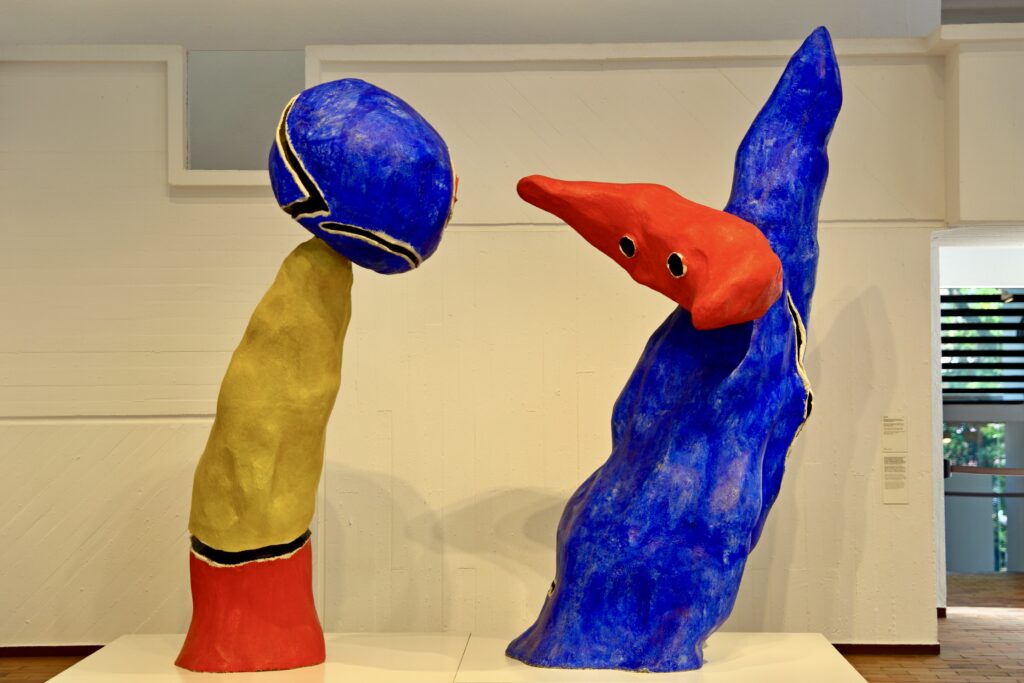
Room 12
Room 12 is a sculpture gallery, with pieces from the 1960s and 1970s.
There are some small bronze sculptures by Miro, who took up this medium later in life.
At the end of the hall and downstairs, you’ll find a room filled with artworks donated to the museum by Miro’s friends, from Henry Moore to Henry Matisse.
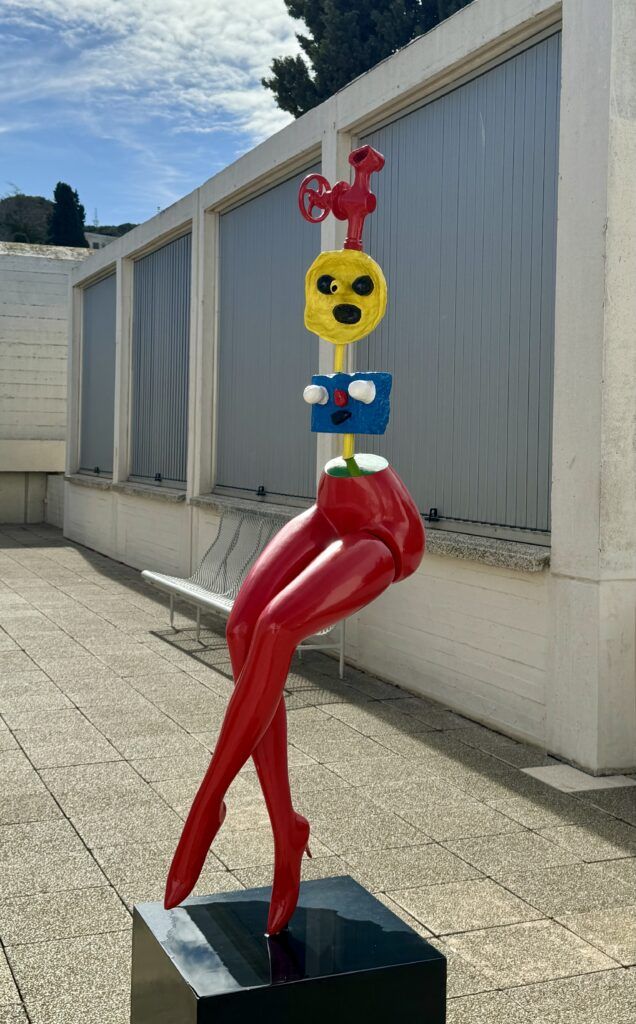
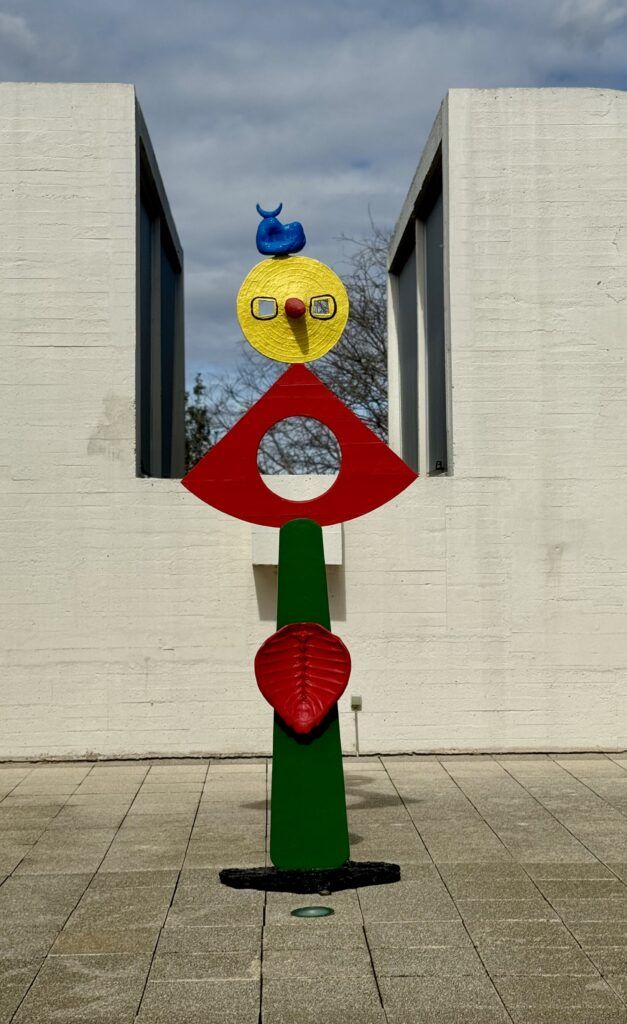
Second Floor
On the second floor, you. can head outside to an outdoor sculpture gallery.
You’ll find playful sculptures of women and birds in bright red, yellow, and blue colors.
Perhaps the most famous one is Caress of a Bird.
Created in 1967, this piece is made from painted bronze, a medium Miro used to explore three-dimensional forms.
A little blue bird sits on the figure’s head. The abstraction female form recalls ancient pagan fertility symbols.
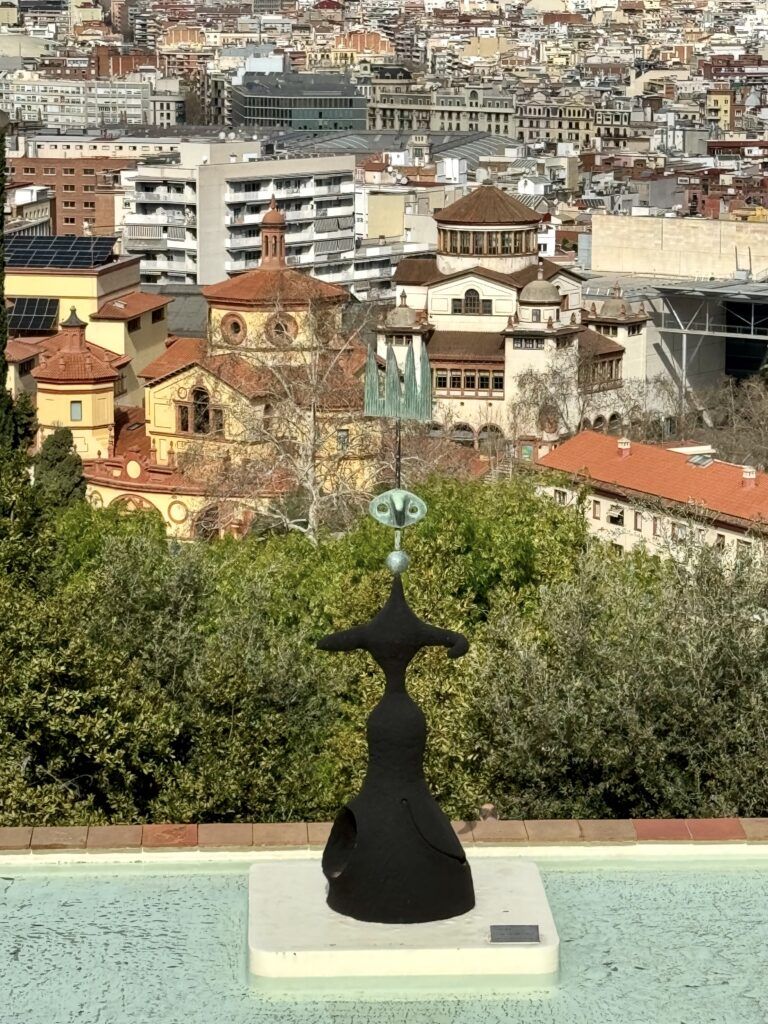
North Patio
If it’s open, you’ll also want to venture out onto the North Patio. There are beautiful views of the city, including the spires of Sagrada Familia.
There’s a scaled down sculpture of a piece originally commissioned by the city of Chicago.
It’s vaguely female in form, with arms outstretched in a welcoming gesture. Instead of a detailed face, the figure features a simplified mask, punctuated only by holes for the eyes.
Practical Guide & Tips For The Miro Foundation
Address: Parc de Montjuïc
Hours: Tuesday through Saturday 10:00 am to 8:00 pm, closed Monday.
How to Get There: The 55 and 150 buses will get you to Montjuïc. You can also take the Montjuïc Funicular from Metro Paral·lel or grab a taxi.
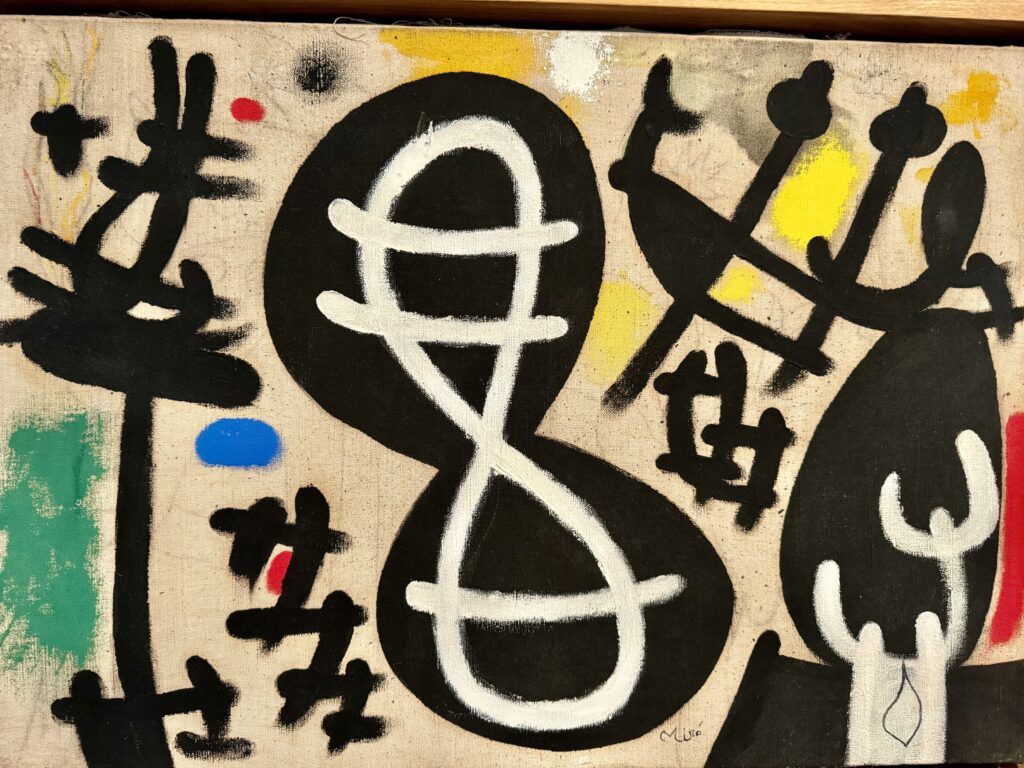
Tickets: 15 euros. Admission is also induced in the Barcelona Articket (covering 6 museums) and the Barcelona Card.
Hours: Open Tuesday through Sunday from 10:00 am to 7:00 pm. From April to October, open until 8:00 pm on Tuesday through Saturday.
Pro Tips:
There is free access to the bookshop, gift shop, restaurant, and library.
Click here for a map of the museum and the surrounding area.
There are temporary exhibits as well, downstairs in the Espai 13 installation space.
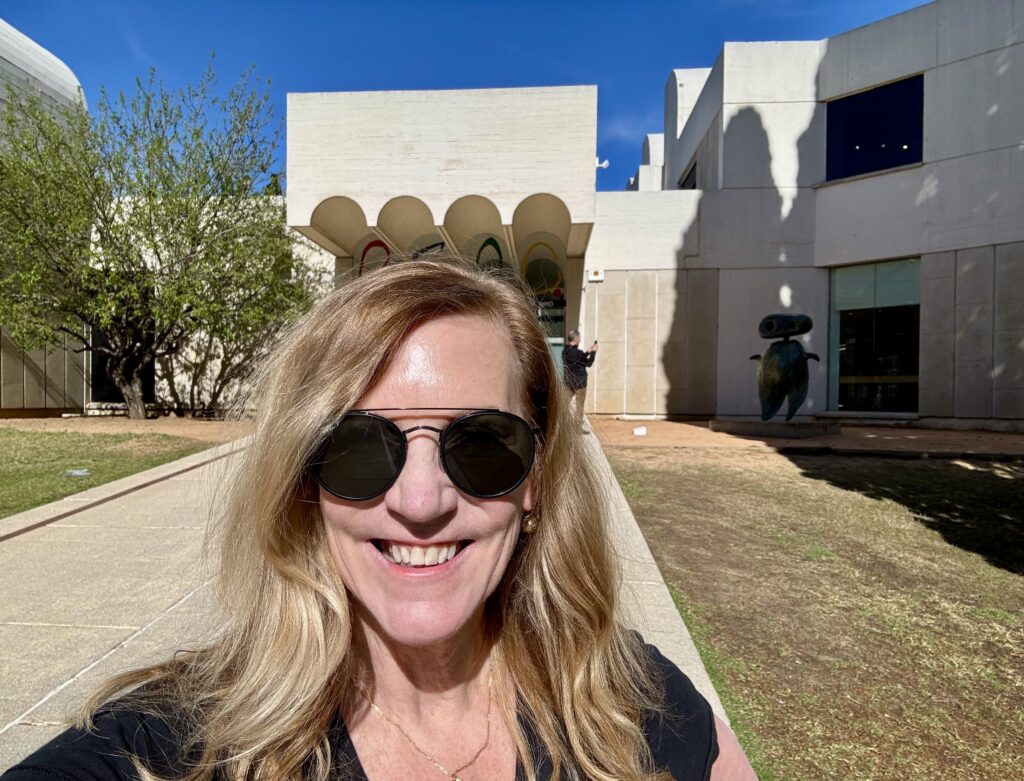
I hope you’ve enjoyed my guide to the Joan Miro Fountain. You may find these other Barcelona trade guides useful:
- 1 day in Barcelona itinerary
- 3 days in Barcelona itinerary
- what to do in the Gothic Quarter
- hidden gems in Barcelona
- landmarks in Barcelona
- guide to Sagrada Familia
- guide to Casa Batllo
- guide to La Pedrera
- guide to Palau Güell
- guide to architecture in Eixample
Pin it for later.

